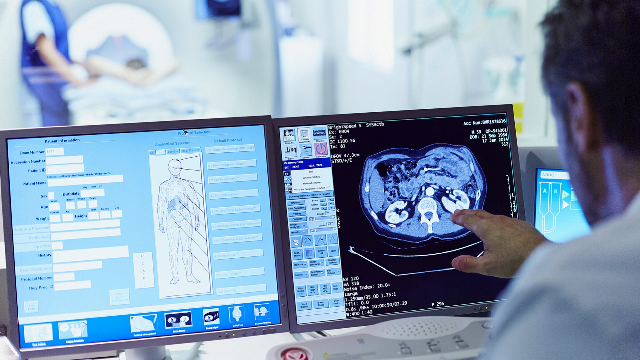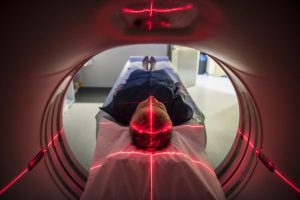Medical imaging is undergoing massive change and according to an expert, that change is moving the industry beyond diagnosis.
This article is well suited to students in years 8-12 to highlight the diversity of STEM careers and skills required in the medical sector.
Word Count: 669

Why This Matters: With change comes new opportunities.
As innovation accelerates and artificial intelligence continues to advance, the nature of many industries is changing. One industry that is having its entire fabric changed because of modern technologies is medical imaging.
Medical imaging has been in rapid evolution for the past century, making it one of the fastest developing fields.
“Advancement in technology has meant that imaging in its purest beginnings, the humble X-ray, has gone from plain film to computer radiography and now in its current digital radiography,” says Gail Powe, an expert in medical imaging at Deakin University.
“And then, think of a CT scan. It’s gone from single slice technology that would take up to thirty minutes per scan to full body examinations that take seconds. It really has evolved dramatically.”
And new technologies are continuing that rapid change, taking medical imaging industry in a completely new direction by making it much more than just imaging.
Becoming more than diagnosis
One of the main ways that medical imaging has evolved, says Powe, is moving beyond diagnosis and into areas such as treatment and intervention.
“3D CT data sets can now be used for surgical planning and radiation targeting, ensuring that effective treatment of appropriate areas while avoiding sensitive organs,” Powe explains.
One example is in orthopaedics, with surgeons using specialised software to plan hip and knee surgeries.
Surgeons can use 3D Computed Tomography models to create physical models that can be used to simulate surgery and in training. The second is planning software that surgeons can feed patients’ CT data into to produce detailed 3D-based surgical plans. These plans can then be modified and adjusted according to what surgeons deem best for the individual patient.

Artificial intelligence is also another new technology that is having a huge impact on the medical imaging field.
Medical imaging modalities like CT, MRI and Digital Radiography all produce large data sets, that are often sorted through by humans. These data sets can be comprehensive and take a human quite some time to work through.
However, appropriate algorithms and analysis can lead to greater detection, diagnosis and treatment of a range of illnesses.
“Huge data sets are already available through imaging modalities like CT, MRI and Digital Radiography. It is purely a matter of formulating the appropriate algorithms and analysis to dissect this raw data,” Powe explains.
“Critical findings may be identified within seconds of scan completion, allowing the technologist to inform radiologists of significant findings for rapid diagnosis, and then rapid treatment.”
Collaboration with other fields
With new technologies and the massive increases in data produced, comes new opportunities for collaboration between fields.
Powe points to shared projects between medical imaging and engineering in particular in the form of projects like 3D printing.
“Data sets can be used for creating patient specific organs that can be used for surgeons to practice without prior complex surgeries. Similar data can also be used for 3D printing of custom prosthetics.”
Another industry that will have a greater role in medical imaging is computer sciences with tools such as virtual fly-throughs being developed to help diagnose lumen patency.
“It’s cross-fertilisation like this that will continue to have an even greater focus in years to come,” says Powe.
However, with a changing industry comes the need for a wider range of skills. That means that there will be more opportunities for people to work in medical fields without necessarily needing to study a medical degree. Engineers, computer scientists, physicists, software designers and technologists will all be required, meaning that people can combine their interests into one career.
It also means that medical imaging practitioners themselves will have a more diverse skill set.
“Digital skills including data processing, analysis and interpretation will now need to be a part of radiographers basic skill set.”
“As AI plays a bigger role in detection and diagnosis, medical imaging practitioners will also need to develop further skills in this area to understand and assist in the AI learning and implementation process.”
Login or Sign up for FREE to download a copy of the full teacher resource





